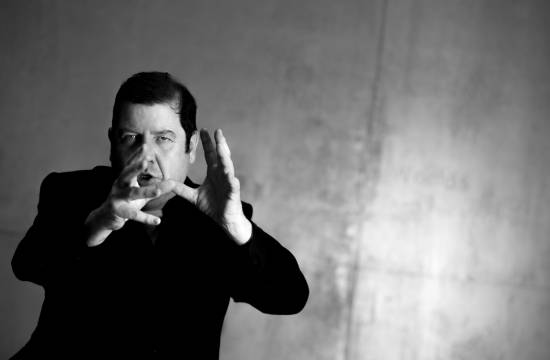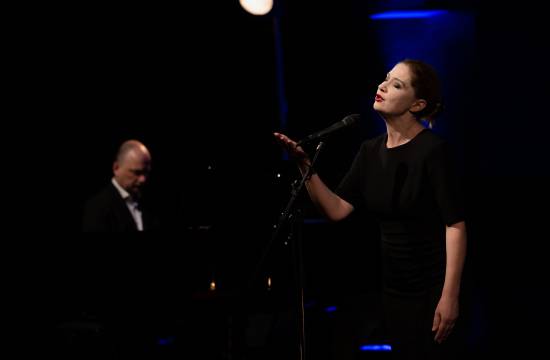Conductor: Ivor Bolton

Libretto: Carl Haffner, Richard Genée after the play Le Réveillon by Henri Meilhac and Ludovic Halévy
Conductor: Ayrton Desimpelaere
Director: Krešimir Dolenčič
Choreographer: Lukas Zuschlag
Set Designer: Andrej Stražišar
Costume Designer: Alan Hranitelj
Lighting designer: Andrej Hajdinjak
Sound Designer: Luka Berden
Video Projections: Stella Ivšek
Language Coach: Marja Filipčič Redžić
Choir Mistress: Željka Ulčnik Remic
Concertmaster: Gregor Traven
Assistant Conductor: Jakob Barbo
Assistant Stage Director: Simona Pinter
Assistant Choreographer: Olga Andreeva
Assistant Costume Designer: Ana Janc
Assistant Set Designer: Vanesa Garpova
Répétiteurs: Kayoko Ikeda, Višnja Kajgana, Irena Zajec, Irina Milivojević, Stefan Pajanović, Marina Đonlić (zbor)
Prompters: Dejan Gebert, Urška Švara Kafol
Stage Managers: David Grasselli, Goran M. Plečnik, Jure Čehovin
Slovene National Theatre Opera and Ballet Ljubljana soloists, choir, corps de ballet and orchestra
Running time: 3 hours, including two intervals
The operetta has supertitles in Slovenian and English
Die Fledermaus (The Flittermouse or The Bat), a high-spirited tale of intrigue, disguise, surprising twists and denouements in lavish costumes, is an operatic gem, the famous masterpiece of "the Waltz King", Johann Strauss II. It has received thousands of performances all over the world, there is probably not an opera stage that has not featured this portrayal of the epicurean Viennese bourgeoisie in all its old splendour.
Johann Strauss II or Strauss The Son (1825–1899) was encouraged to try his hand at operettas by Jacques Offenbach himself, who thought that the king of Austrian light music was practically destined for this new entertainment genre. Not yet an elitist institution, 19th-century theatre attracted audiences across all classes. Strauss's first attempt received favourable reception: his operetta Indigo und die vierzig Räuber premiered in 1871, was restaged in Paris (1875), and presented in London (1877) and New York (1891).
This was followed by Der Karneval in Rom (The Roman Carnival), which was written for the Vienna World Exhibition in 1873. It took European stages by storm despite the escalating economic depression the world was facing at the time. Among his stage works, Die Fledermaus became the classical example of Viennese operetta. It is based on a French text: the comedy Le Réveillon by the famous Meilhac-Halévy duo, who also wrote the libretto for Bizet's Carmen, opened at a Parisian theatre in 1872. In Vienna, the play was snapped up by the Carltheater, an opera house that favoured new Parisian works.
Meilhac and Halévy's play was translated into German by Karl Haffner with an Austrian "health resort in the vicinity of a big city" as its setting (Haffner was probably referring to Bad Ischl). Then the text somehow found its way to Maximilian Steiner, impresario of the rival Theater an der Wien. Ultimately, the publishing agent Gustav Lewy thought it would be best to rework it into an operetta and offer it to Johann Strauss. Everything started to happen at lightning speed.
As theatres were facing financial constraints in the aftermath of the economic downfall of the Habsburg Monarchy, Richard Genée immediately signed a contract to finalise the text, and Strauss secluded himself in his villa in Hietzing for six weeks to compose the famous operetta. The first performance at the Theater an der Wien (5 April 1874) received lukewarm response, even being labelled a potpourri of waltzes and polkas. The Berlin performance in June enjoyed much greater success. Die Fledermaus received its New York premiere that same year. Recognised as a great masterpiece, the operetta finally won the hearts of audiences across the world.
Johann Strauss II: Die Fledermaus
24,00 | 28,00 | 35,00 | 42,00 EUR
18,00 | 24,00 | 32,00 | 37,00 EUR * * EUR for younger than 25 and older than 65, as well as pensioners.
Cast:
Gabriel von Eisenstein: Matej Vovk/Martin Sušnik a. g.
Rosalinde, his wife: Martina Zadro/Mojca Bitenc
Frank, a prison governor: Jože Vidic/Marko Ferjančič
Alfredo, a singer, and Rosalinde's former lover: Aljaž Farasin/Dejan Maksimilijan Vrbančič
Dr Falke, a notary: Rok Bavčar/Slavko Savinšek
Dr Blind, a lawyer: Gregor Ravnik a. g./Edvard Strah
Prince Orlofsky: Nuška Drašček/Anja Zemljarič
Adele, Rosalinde's maid: Nina Dominko/Štefica Grasselli
Ida, her sister: Ireneja Nejka Čuk/Lora Pavletić
Frosch: Gojmir Lešnjak Gojc a. g.
Composers (all a. g.): Jakob Kavšek, Jure Gostinčar, Maj Žan Peršin
Body Guards (all a. g.): Anja Möderndorfer, Luka Ostrež, Maja Železnikar, Mateja Železnik
Co-production: Slovene National Theatre Opera and Ballet Ljubljana, Cankarjev dom









